Birth! School! Work! Death!
The little house we used to live in
“How beautiful it is, this scroll. At once, a fine shrine is to be carpentered to preserve it from the dust and from the air.”
Tieck 2, 102
BIRTH! SCHOOL! WORK! DEATH! is the artistic collaboration between Stephan Schwarz and Anita Steinwidder.
Their works evolve around the love of unloved, discarded, scrapped and forgotten things, and their attempt to retrieve the poetry that dwells within. The removal of these things from their original context by, for example, reworking and rearranging them, in order to rediscover them in a new context, is the result of the creative language shared by SCHWARZ and STEINWIDDER.
BIRTH! SCHOOL! WORK! DEATH! deals with the undeniable “facts”: life, death and the “in between”. Most importantly though, it deals with what is and remains to be our very own: the heart – the personal “shrine”.*
“The little house” is translated into 5 shrine-like objects. Their outer skin appears tightly interwoven, enfolded and enmeshed. Here and there, the inward breaks out, allowing insights. Object 6, a mask laced up with belts, stands alone, evoking associations of unfree thought, speech and hearing.
The little life is „everything” to everyone. Every person’s life revolves around its shrine.
It rests on oneself, to decide what to preserve within oneself. In this work the shrine translates into an object of sensation and a shelter for the ego. It unites the qualities of a materialistic and spiritual repository.
Within the constraining braces of birth and death, education and work are the seemingly inevitable facts in life. Years of study and employment define a majority of our consciously experienced lifetime, thus becoming the core structure that forms our social identity. We perceive ourselves to be trapped in this construct. From a western point of view, the educational opportunities within the timespan of a career life can lead to compulsory self-optimisation. The “little life” begins.
The shrine, however, retains a person’s most intimate story and their precious being. It negates social constraints, provides an exit and focusses on the essence of what it means to be. Enshrining thoughts and memories, it becomes a cultic site and a place of concealment – it is the little house. The house stands for motherliness and, metaphorically, for a trust in the word.
Fondly experiencing the ease of those comforting childhood emotions. The heart aspiring to conserve. The dichotomy between it: denoting comfort, concealment and safety on the one hand, and to be involuntarily locked up or a standstill, on the other hand. Such space can quickly arouse the feeling of being cramped, thereby threatening the previously experienced comfort of the room. The process of coming to terms with one’s past though, may allow for the possibility of a successful escape from the little house.
With regards to the process and meaning making of the work at hand, SCHWARZ and STEINWIDDER favoured different approaches. Yet, their respectively told stories stand side by side – each very unique, but not alone. The result thereof – unpredictable, as the newly emerging characteristics of their work cannot be directly attributed to the individual pieces – is emergence, not the sum of the whole.
Every person is the centre of their life. Everyone has their great story. However, not every story needs to be told. It rather has to do with the totality of stories.
Elaborately designed “suits” are the result of a long-term and multipiece project by Stephan Schwarz.
Clothes are personal. They are abode, like the preceding version of the hut, the bird nest. Resembling a dress covering the body, the nest replaces the missing feathers on a person, enfolding the vulnerable self. The clothes display traces of the persons wearing them, their bodily fluids. Clothes of strangers are truly precious. This is not merely due to their materialistic value, but also because of the sentimental one attached to them. Clothes are believed to be the second skin, the house is believed to be the third.
SCHWARZ and STEINWIDDER used these suits as their source material, transferred them into boxes and in doing so, started their transformation and redefinition. Now, having been detached from their original context and thus, having become entirely independent, the prime focus was shifted onto the abstract level, to the poetry of “things”.
The material was hermetically sealed in boxes, thereby creating these impenetrable and equivocal shrines, that enfold the self. Wood and rope constitute the outer shell, something pervasive, where the outer skin is entangled with the inner skin, at the same time describing a distinction between itself and the “other”. Fabric, metals, dispersion paint, ink, mirror and much more are enwrapped and become wedged. Merely a part of it is visible and only what wants to be told is presented and told.
The shrines are transformation, a caesura they conclude and bring to an end. The fact of death is a mere astriction. A unique closure from the past for everyone. A turning away, with one foot in the door of a new room.
* The word shrine derives from the Latin word scrinium “case or box for keeping papers”, from the old English scrin “ark (of the covenant); case; coffer; chest for relics”. From late 14th century “a tomb of a saint” (usually elaborate)”. Old high German scrîni, crinium, capsula: a case, cabinet. Originally the term denoted richly decorated cases for storing religious objects, particularly relics. The meaning of coffin also derived from it, initially denoting those used to store sacred or venerable remains. General usage describes a lockable, secure case for keeping jewels, jewellery, money, clothes etc. The saying goes that a filled shrine indicates wealth, an empty one, poverty. From all the related imagery, especially the shrine of the heart, depicting the innermost, the tightly sealed, the desiring, continues to exist.
- Idea, concept and realization: SCHWARZ / STEINWIDDER, 2019
- Photos: Klaus Fritsch
- Text: Erika Eisenhut
- Translation: Alexandra Leisser
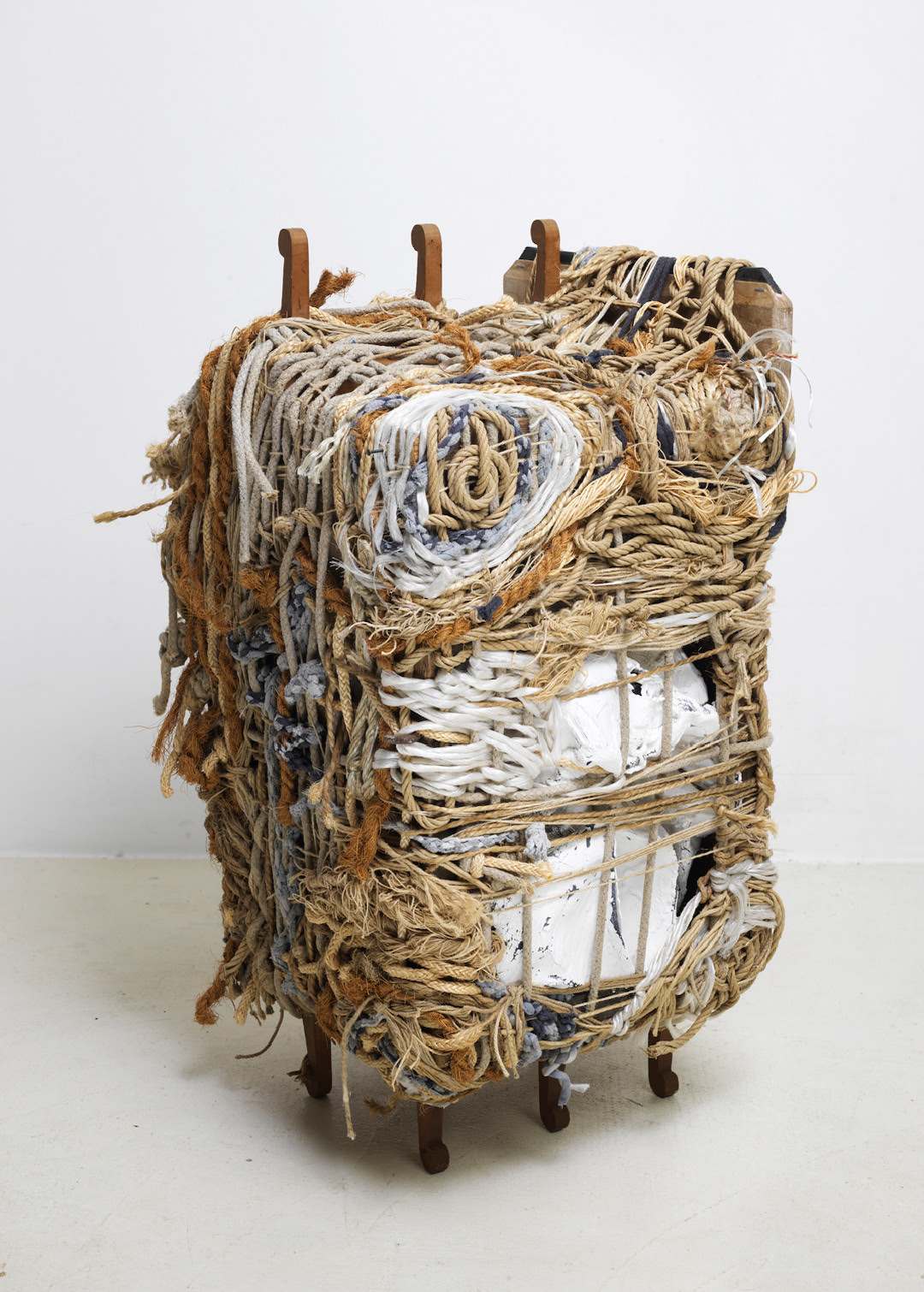
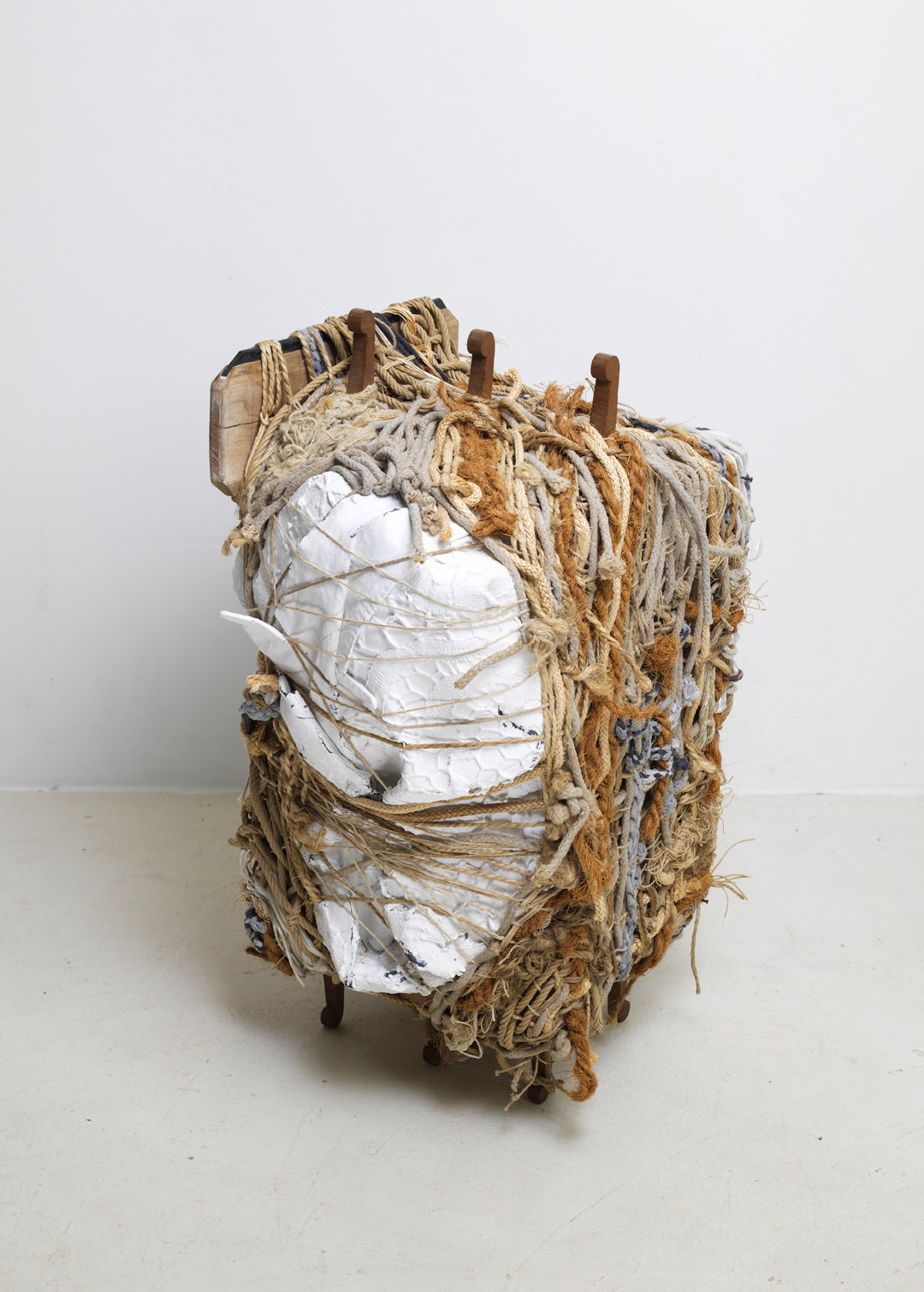
Wood; nails; iron; rubber; ropes, cords and yarns made of natural fibers, paper and nylon; tied cords made of used jersey; dispersion paint; crochet tablecloths; used clothes;
42 cm × 36.5 cm × 62 cm
Artwork and prints: available
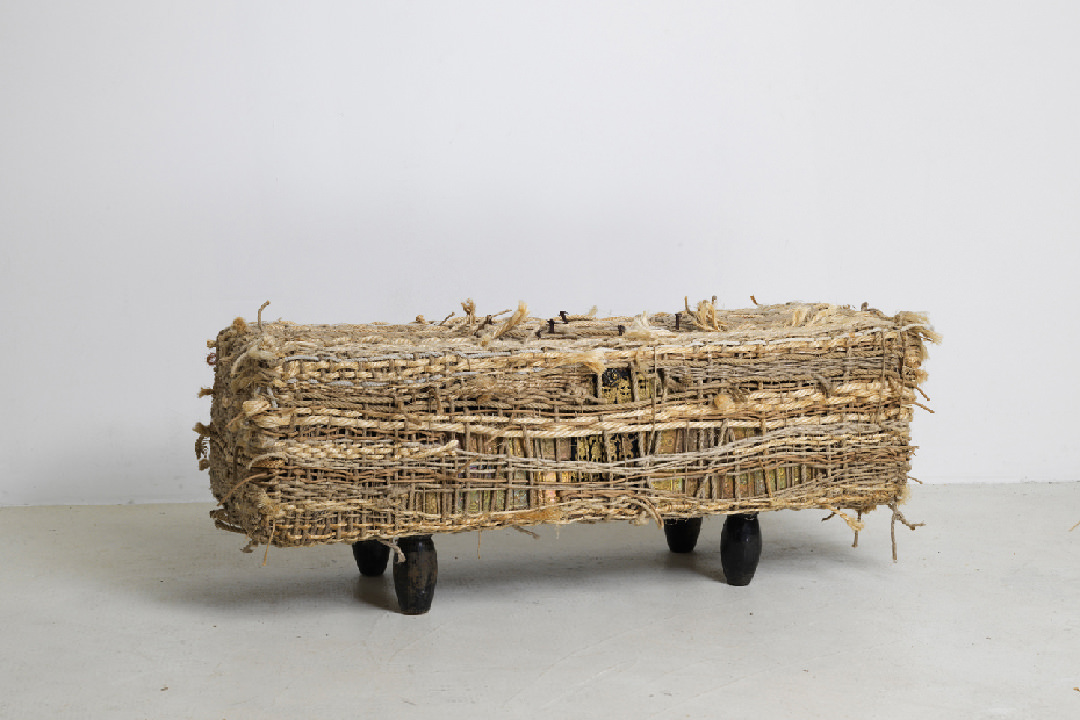
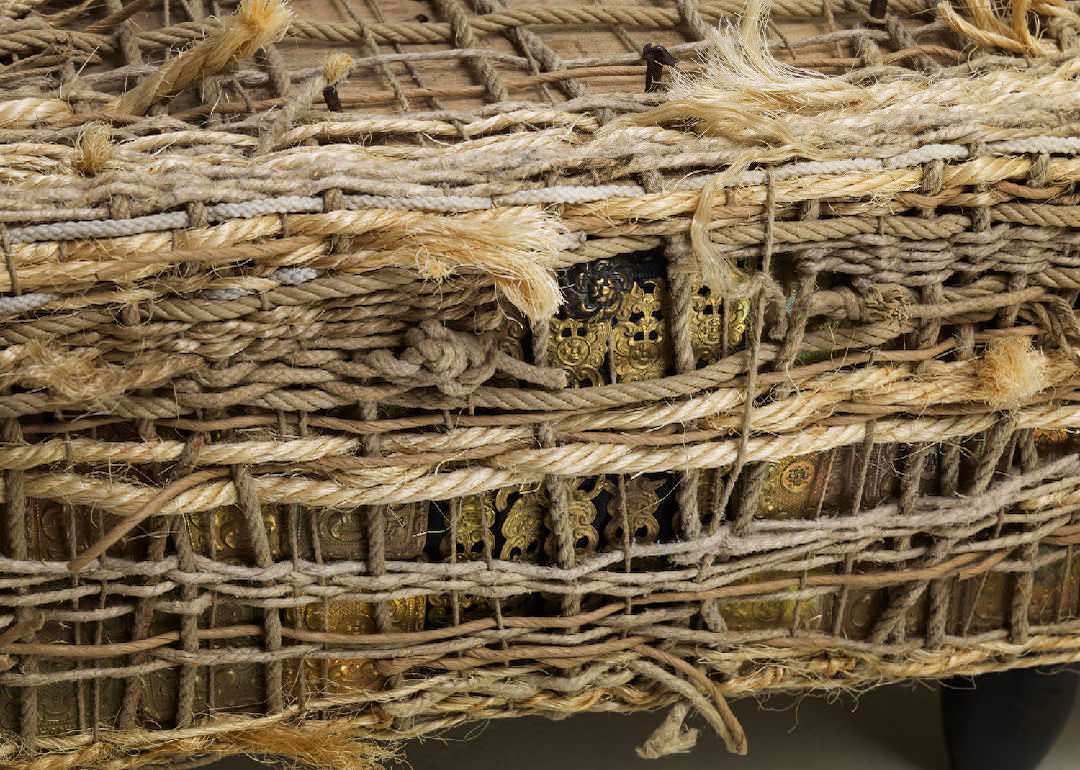
Wood; nails; iron; ropes, cords and yarns made of natural fibers and paper; cable; historical brassware; antique decorative nails; antique copper plates; used clothes;
80 cm × 34 cm × 31.5 cm
Artwork and prints: available
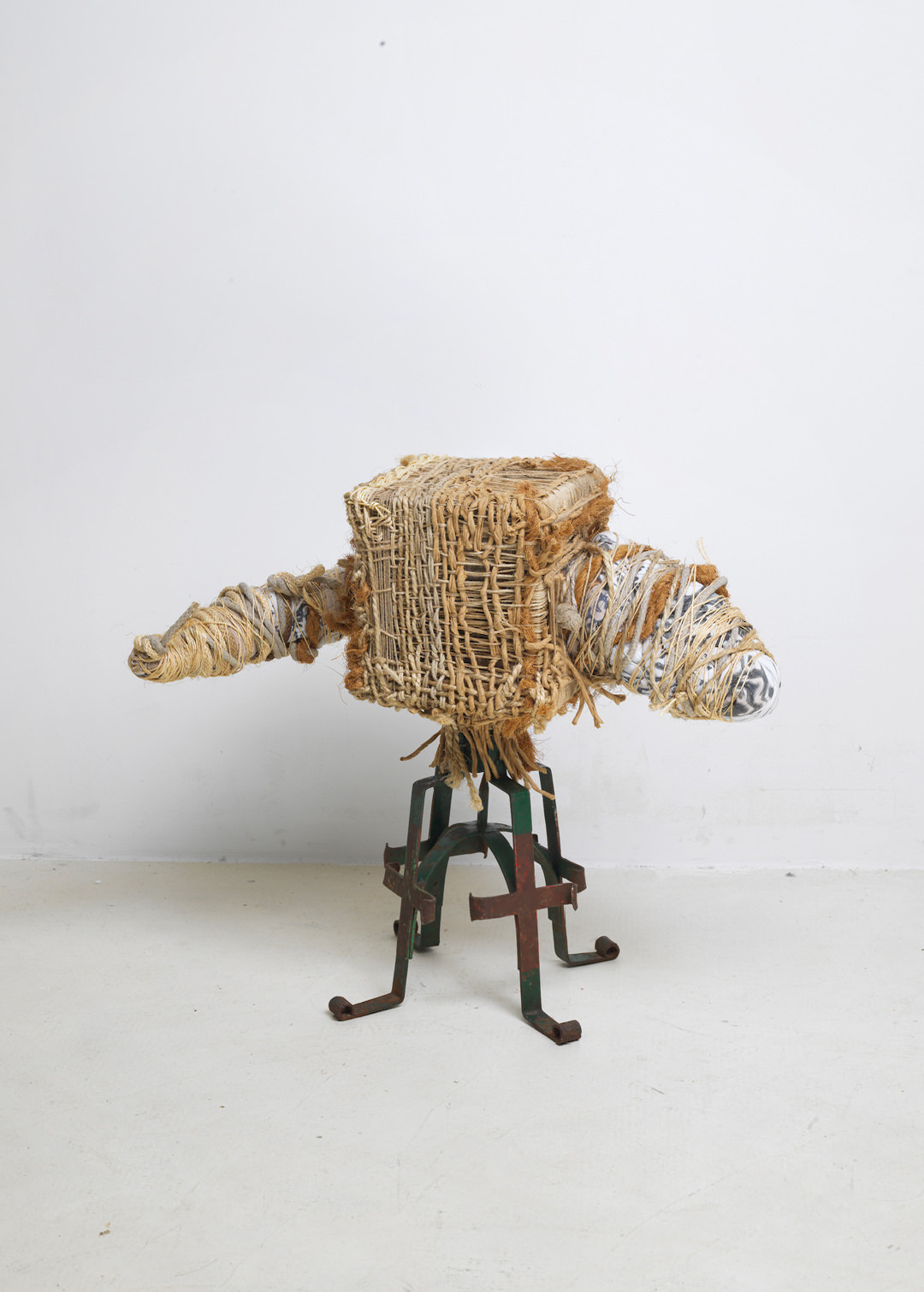
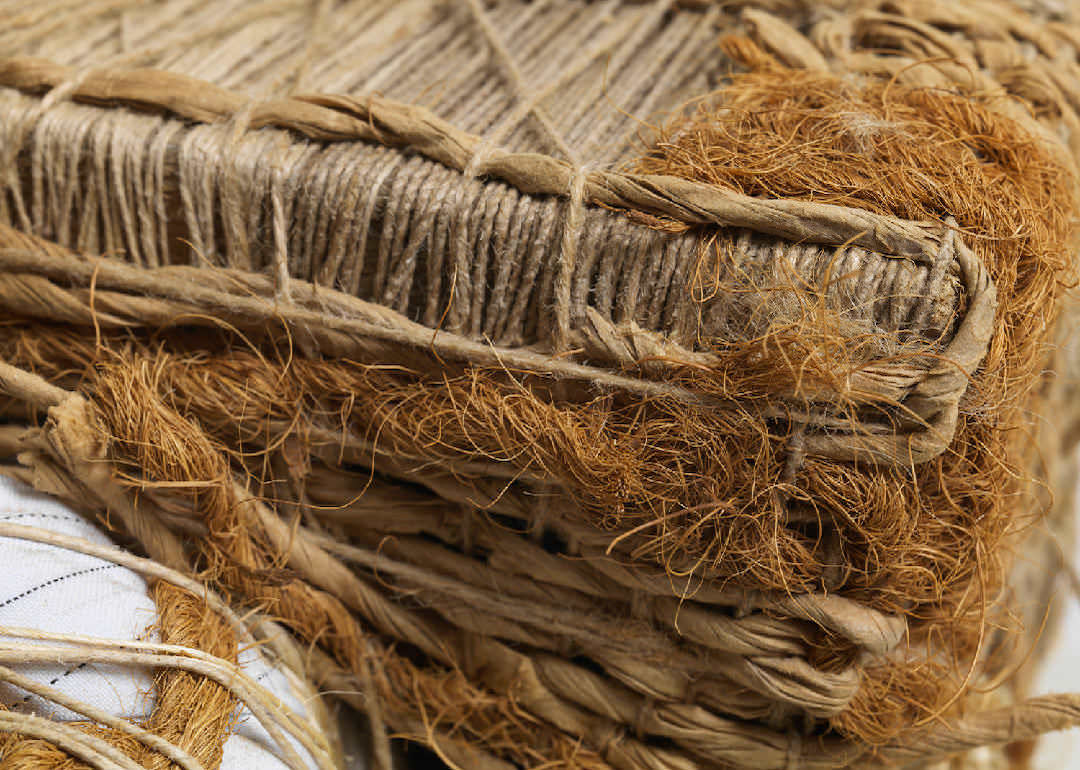
Wood; nails; screws; iron; ropes, cords and yarns made of natural fibers and paper; felt pen graphics and red wine stains on used clothes;
56 cm × 26 cm × 48 cm
Artwork and prints: available
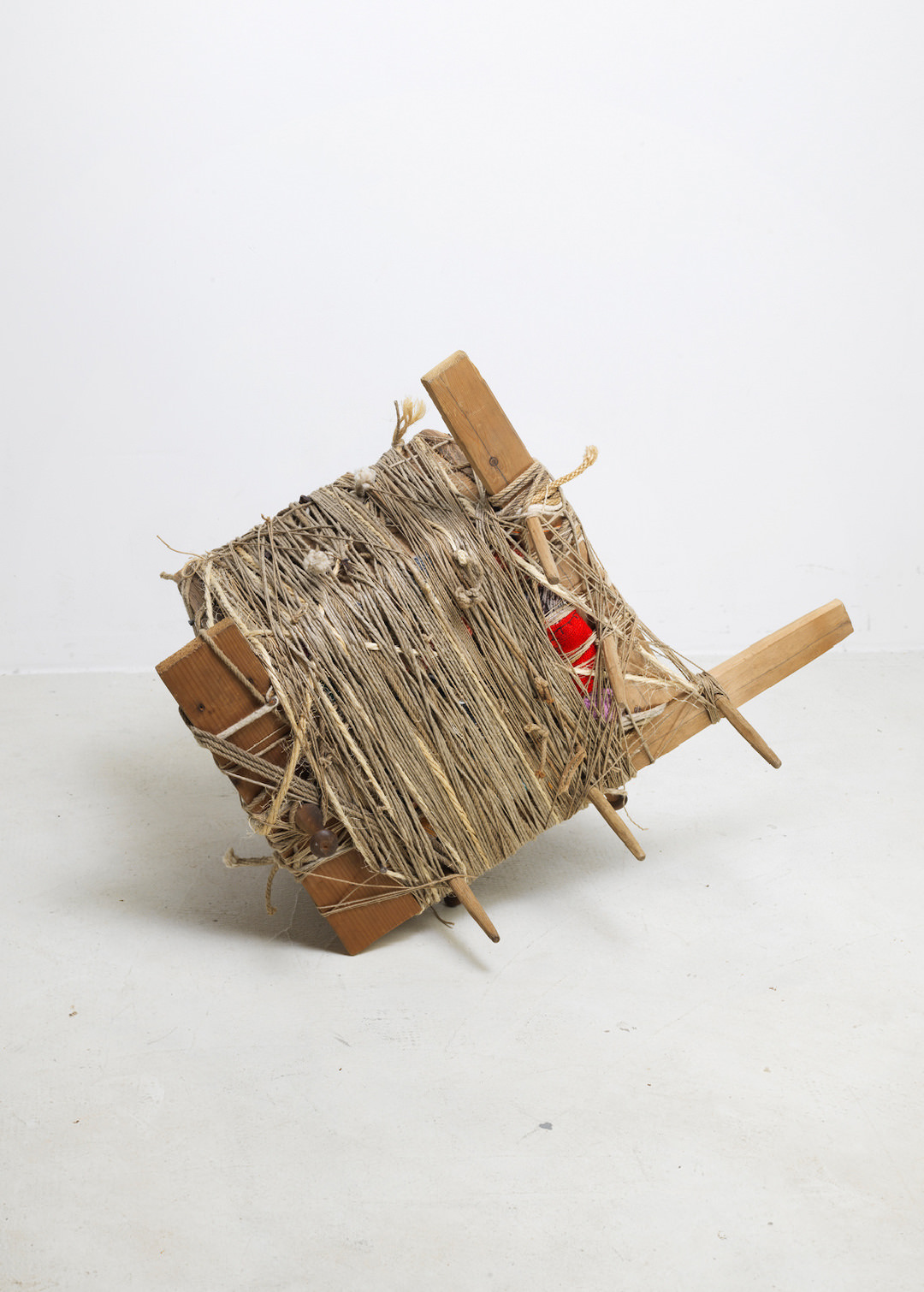
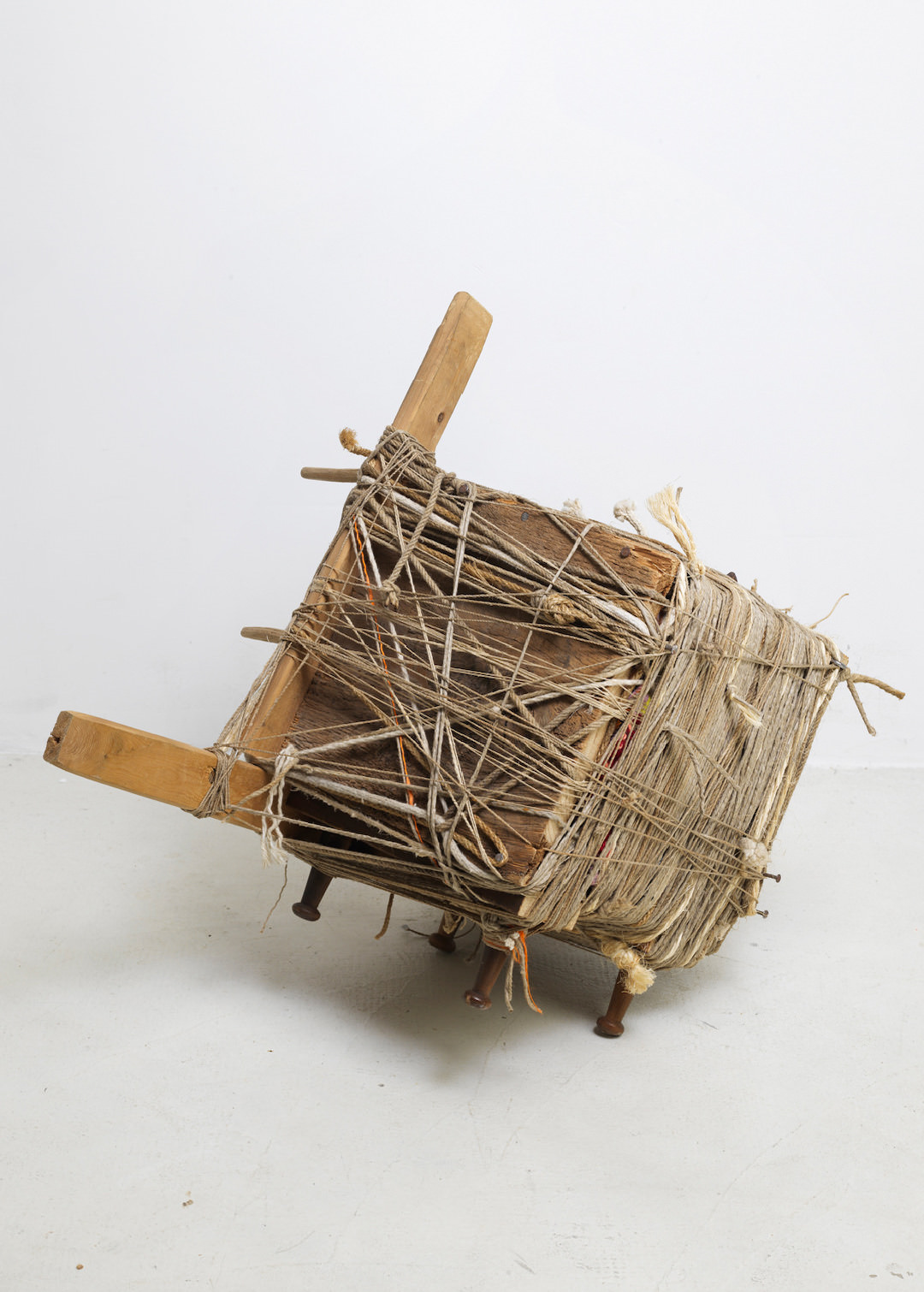
Wood; nails; ropes, cords and yarns made of natural fibers; used knitwear and clothes;
68 cm × 37 cm × 56.5 cm
Artwork and prints: available
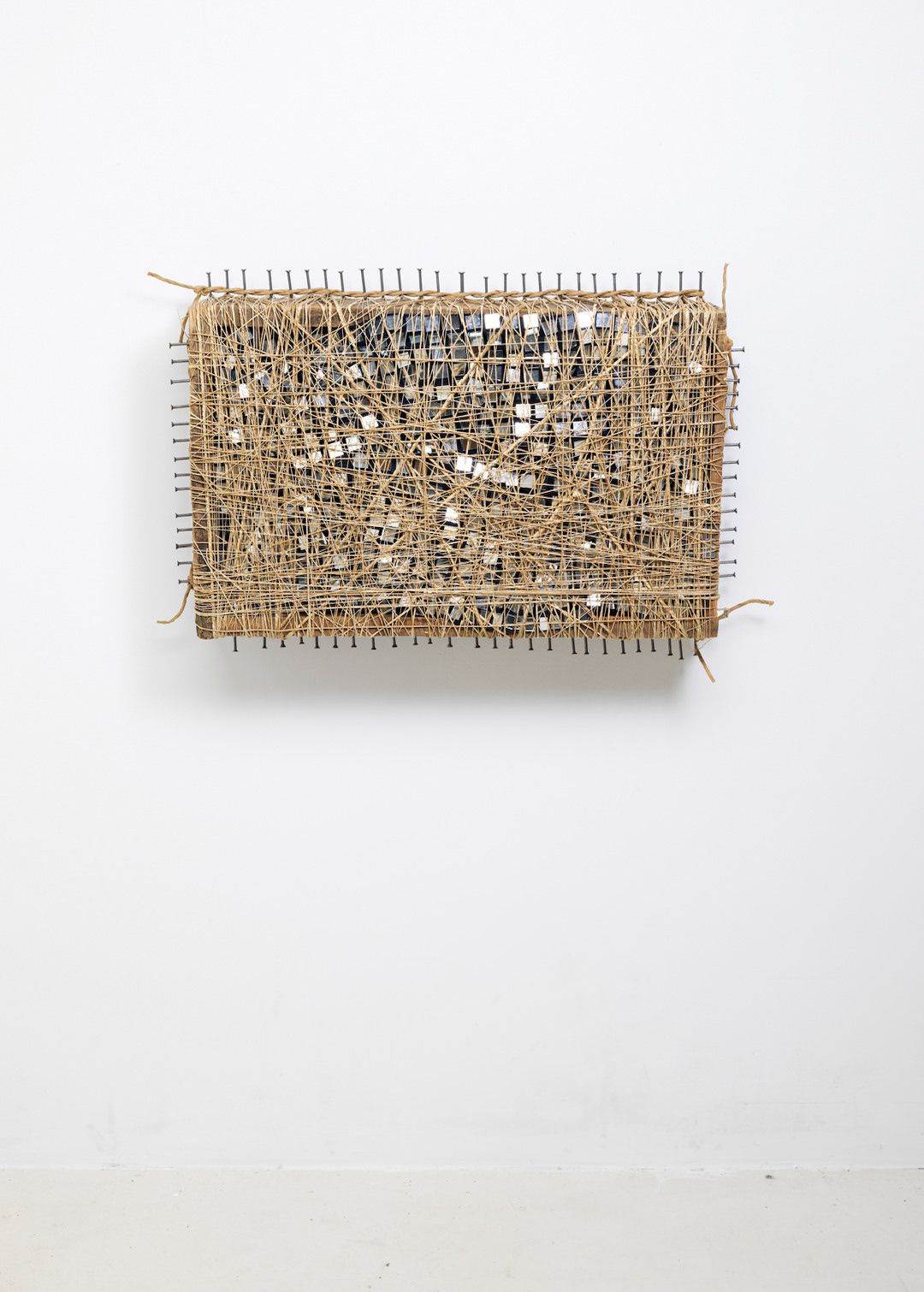
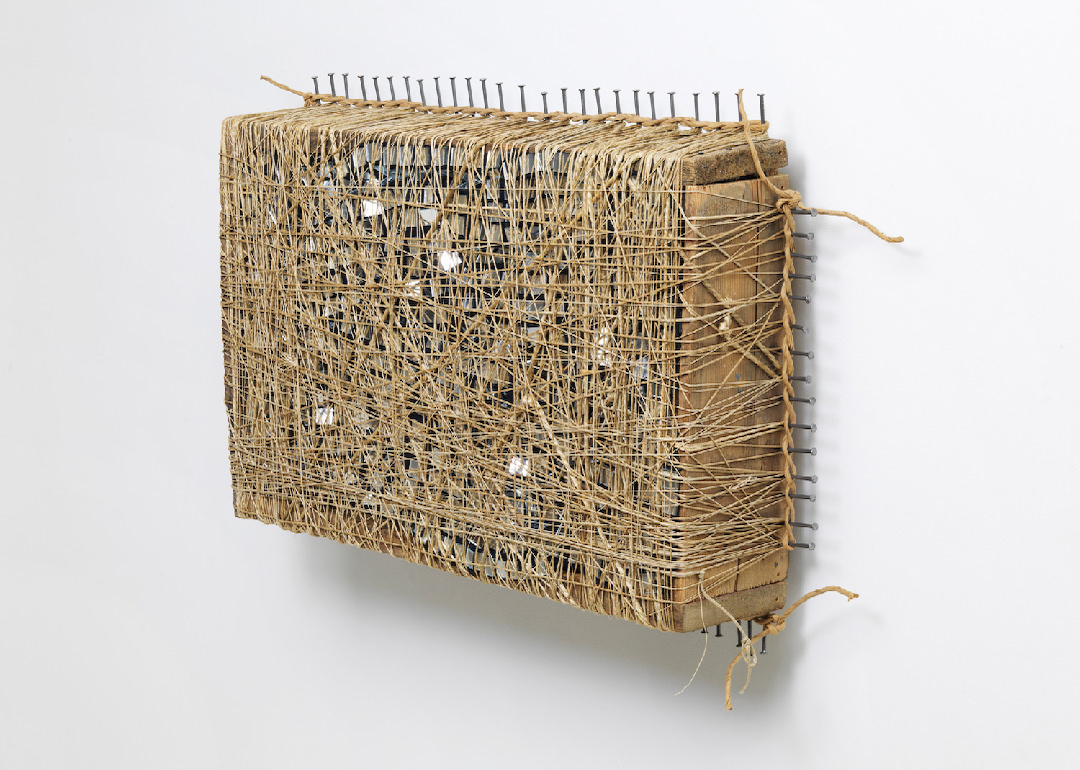
Wood; nails; cords and yarns made of natural fibers and paper; rhinestones; used clothes;
72 cm × 45 cm × 15 cm
Artwork and prints: available
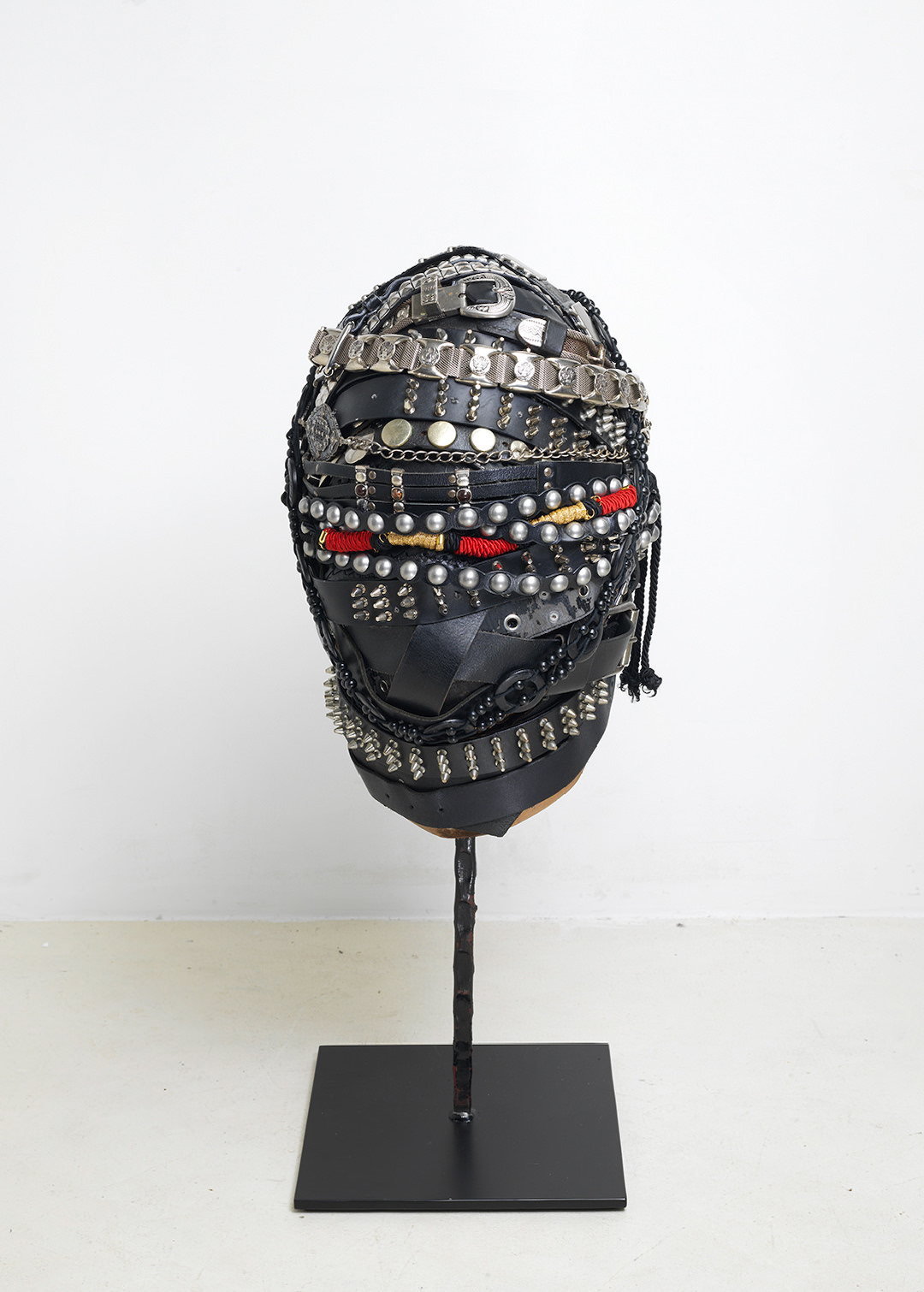
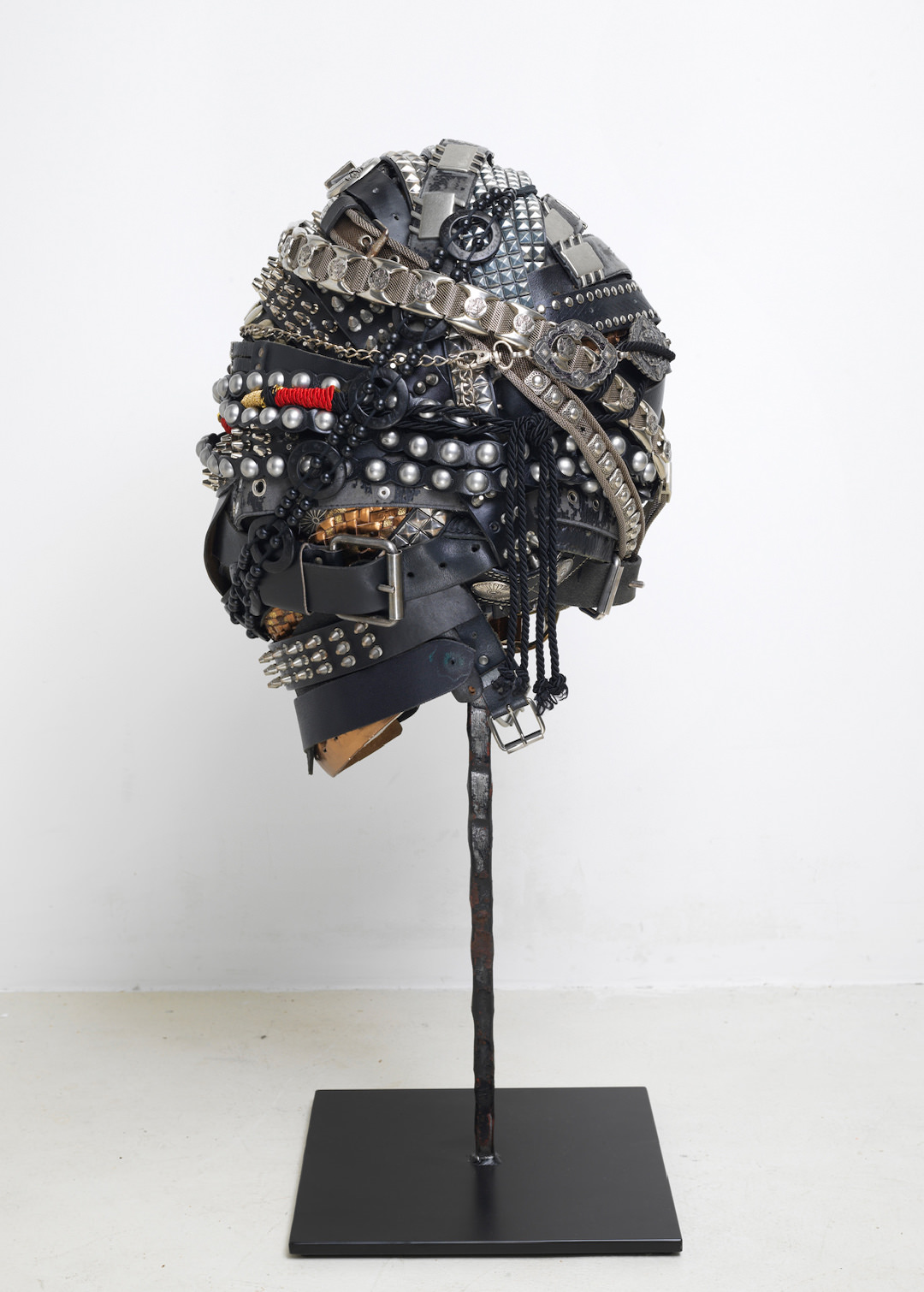
Used belts; iron plate, wrought iron, fixation made of iron and wood; wire; 2 used fencing masks;
36 cm × 32cm × 82 cm
Artwork and prints: available